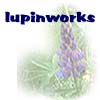Snippets
Index
Thinking With
Everything we read has the potential to help
us view our professional work in a different way. I say potential because
the questions we're looking for aren't in the writing but
in our engagement with what an author has to say. If we start
out reading for "tips" we may miss whatever opportunity
the writing may afford for allowing us to think about our
work rerflectively; whereas coming to a text open to seeing
comparisons with our own work lets us think with an author.
Patti Stock wote:
Sometimes we begin by testing the dimensions
of an anecdote one of us has told the others: Telling and
retelling it, we place an dreplace it in contexts that
enrigh its meaning. As we add and subtract details, we
translate the anecdote into an event, a significant occurrence
within one of tohe larger narratives that define our teaching
practice....We compare, contrast, sort, elaborate, and
refine our anecdotes until we have identified those elements
that name the 'family resemblances' in them....We replay
them, inviting colleagues who have not experienced those
moments with us to examine them with us as we re-search them....Drawing
attention to those frames, we present our colleagues with
problems for study. In so doing, we invite members of our
research community to reach into their memories for analogous
teaching-learning moments that have occurred in their classrooms
and, in light of those moments, to join us in making what
sense of them as we can in order that we may improve our
teaching practice. [Stock, 1993, The function of anecdote
in teacher research. English Education, 25(3): 173-178]
This is probably as good a description of thinking
with as I've come across. Stock is talking about creating
this potential as an author; but from the other side, as
a reader, our engagement with what she calls "the anecdotes"
is what draws us into a reflective reading stance. The important
difference between thinking with and a more traditional reading
stance is one of purpose—instead of looking for "tips" we're
reading for connections and opportunities to understand our
work from a different perspective.
Wendy Peters-Epp (journal entry) discusses
this in something she wrote:
I'm reading your article, Judith, for the
first time in a few months and I'm suddenly aware of how
many layers of meaning are embedded in a text. Except on
a relatively superficial level, the meaning of a text is
almost entirely reader-dependent. Each reader picks out
something different depending on what issues are dominating
the scene in his or her life. And what the indificual reader
picks out will change as the reader's thinking evolves.
...
I survey the physical evidence: different
colour inks; hurried scrawl...;careful, neat script...;
and highlighter versus post-its. These tell the tale of
at least three readings at very different stages in time,
and in my way of thinking, and of making meaning. EAch
time, something different has crawled out of the woodwork
of my understanding.
In some sense this is an illustration of what
Patti Stock has in mind, I think. We need to revisit our
own narratives, our anecdotal accounts, in order to think
with them, to see the situation with new eyes. What Wendy
experienced was that her understanding of someone's published
ideas afforded her a continuous unfolding of understanding.
|

